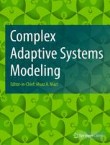A novel ontology and machine learning driven hybrid cardiovascular clinical prognosis as a complex adaptive clinical system
This multidisciplinary industrial research project sets out to develop a hybrid clinical decision support mechanism (inspired by ontology and machine learning driven techniques) by combining evidence, extrapol...

